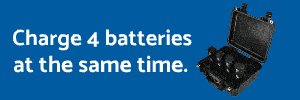Not sure what I'm doing wrong with this **** software but it's got me ready to pull every single one of the hairs I have left out lol. Let me first say I'm new and more than anything just practicing trying to become more proficient (trying to use the Covid19 lockdown time wisely to become as knowledgeable as possible at aerial mapping lol). I fly a P4P v1 and have currently been using DD to fly the mission and collect the data but have been using Pix4dmapper to process the images (not sure if that makes a difference or not, I can switch to Pix4dcapture if needed but have so far had good luck DD flying the missions and kinda reluctant to change unless I really need to). I've kept the front and side overlap to 80 degrees flying @9pmh at an altitude of 170ft but keep getting "Error e0046 Processing Failed. No calibrated cameras". I've researched the error and it's basically a list of a bunch of different possibilities so I really don't know where to start. Please help lol.
PS
Not sure if it's needed but my processing rig is a Dell 990 i5 @3.10ghz with 16gb RAM with a 250gb ssd and a geforce 710 gpu.
PS
Not sure if it's needed but my processing rig is a Dell 990 i5 @3.10ghz with 16gb RAM with a 250gb ssd and a geforce 710 gpu.















